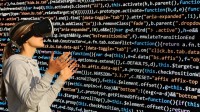Hollywood VFX Experts Gravitate to AR/VR Jobs in Big Tech
November 5, 2020
Apple, Facebook and Google are among the Big Tech companies that are hiring technologists behind Hollywood movies like “Avatar” and “Rogue One: A Star Wars Story.” All three companies are developing headsets or glasses for AR/VR or so-called extended reality, and the most cutting-edge Hollywood visual effects create needed photoreal computer-generated characters and landscapes. VFX veteran Paul Debevec, now a professor at the University of Southern California, was recruited by Google four-and-a-half years ago.
The Wall Street Journal reports the award-winning Debevec stated that, “a lot of the most talented individuals that I’ve met through the visual effects industry find their way into the tech industry.” “It’s harder to make as much money working in visual effects,” he added. Visual effects jobs mean “long, unpredictable hours, limited compensation, poor job security and paltry benefits,” whereas Silicon Valley jobs are abundant and well paid.

According to Harvard Business School professor emeritus Shoshana Zuboff, the migration of talent from Hollywood to Silicon Valley is “the latest illustration of how tech empires are able to corner critical intellectual labor.” She compared it to how major tech companies convinced scientists to leave government and university jobs to work on artificial intelligence projects at Big Tech companies.
In the VFX industry, meanwhile, “falling prices have made it increasingly difficult to turn a profit, and compensation for workers has suffered.” Accenture predicted that “company spending in the immersive technologies [will] grow to $121 billion by 2023 from $21 billion in 2020.”
“Our smartphone world has become so laden, so rich,” said early VR developer Mark Pesce. “We spend so much time looking down into this screen, there’s very little more we can do with that. The next [thing] is to turn the world into the screen … that is what AR offers.”
Visual effects professionals like Debevec bring their expertise in creating photoreal people and objects. When he led the USC Institute for Creative Technologies, Debevec and others designed The Light Stage, a spherical space with 14,000 lights and 40+ cameras for capturing high-resolution digital scans of humans for use in motion pictures.
In 2017, “Google built its own, bigger Light Stage, capable of capturing not just a person’s head, but the entire human form … [and] with Debevec’s help … is using the device, in part, to try to create thoroughly convincing digital humans for AR and VR platforms.”
Apple also purchased facial-tracking technology developed by Hao Li, former head of another USC lab, who was also involved in visual effects creation. It has used Li’s technology “as the basis for its Animoji, which allows users to meld their own facial expressions with animated creatures.”

No Comments Yet
You can be the first to comment!
Sorry, comments for this entry are closed at this time.